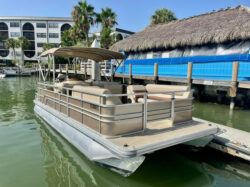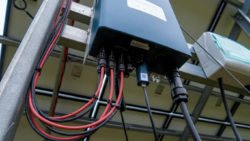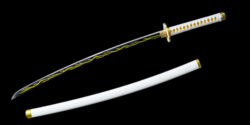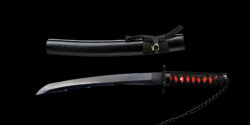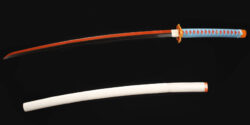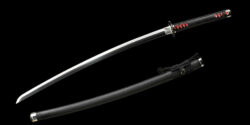Water Heater Installations
10 Water Heater Tips That’ll Help Save Money
By: For Saving Heating & Cooling
Do you know that your water heater and your electricity spend comes up to about 20% of your total bill?
If you are interested in making your home a little bit more energy-efficient, then you have come to the right place.
Indeed, having hot water in the home is something most of us take for granted.
However, when we lose it suddenly, we find ourselves stranded indoors without it.
Clean clothes, washing the dishes with hot water, and enjoying those extra-long hot showers after a long day of work are no longer a convenience.
And because hot water is extremely essential to the normal functioning of every household, this is not a surprising fact.
But, it also still means that having hot water means adding to your monthly electricity bill.
Picture this: some small thing like a leaking faucet can sometimes be much bigger than you anticipate.
This is why we are providing you with the best water-saving tips that can help you save up on your energy bill!
Give it a try and notice just how much money you save.
Let’s get right into it!
1. Lowering The Thermostat Works
Even though there are plenty of manufacturers that will tell you to put your thermostat at 140 F, we have concluded that most households are perfect with 120 F.
We suggest you try taking a shower after you have made the change and see how you feel – it is likely that you will not be able to notice the difference.
This will not only decrease your energy costs, but, it can also reduce the slow buildup of minerals and clogging, and even corrosion in pipes and heaters.
2. Try An Insulated Tank
It does not matter what type of tank you have, if you try insulating it, you will get some incredible results.
You will be able to reduce the heat loss and will prevent the unit from turning on often.
However, in this case, you need to follow the instructions of the manufacturer carefully.
These usually include avoiding covering the thermostat, the burner, and the top and bottom.
If you need some help with this, you can contact a local plumber to help.
3. Heat Traps
The heat traps are the ones that can allow the flow of cold water in the tank, and prevent the heated water to flow out from the unit.
When it comes to modern water heaters, most of them have this feature included.
But, if your unit is more than 10 years old, you can look into the option of installing a heat trap.
Any professional plumber should know how to do this for you.
However obvious it may seem, it is very true. If you want to cut down on your utility bill, try to do some of the more simple tasks with cold water.
It is not an inconvenience and it can go a long way toward reducing your bill.
Also, cold water has been known to be beneficial for the health of the body.
5. Take Care Of Leaking Faucets
Even though it might sound like something very minor, a leaking faucet can be the reason for a higher bill.
If you are dealing with a leaky faucet, then you need to take care of it as soon as possible.
Check the outside faucet too.
Remember, plumbing leaks waste over 90 gallons of water a day!
6. Drain Your TankEvery year or every other year, it is good practice to drain out your tank. This can improve the sediment in your water heater. It’s good because the sediment is responsible for the lowered efficiency of the heater.
This is a very easy procedure to do, all you need to do is follow the instruction of the manufacturer.
If you are in doubt, you can always call a professional water heater installation company to help.
The traditional water tank is always running. This means it is constantly wasting electricity. Once you decide to put a timer that would turn off your heater at night, you will be amazed at how much energy you will save.
This could even add a few years to your water heater.
If you need some more information on the subject, you can call your local plumber and get all the help you need.
8. Getting Your Pipes Insulated
Other than insulating the tank, you can insulate the pipes as well, at least the first 6 feet of the hot and the cold water which are connected to your unit.
This practice will not only prevent your unit and pipes from becoming a fire hazard but will also help preserve heat so your water tank does not need to overwork to maintain a certain heat level.
9. Switch All Your All Appliances
After all, appliances that are old need replacing.
If you have a water tank or a washing machine that is older, then it would be best to replace it with a new model that is energy-efficient.
You have plenty of options on the market, and you can decide depending on your current needs.
10. Think About A New Water Heater
As everything needs replacing, the water heater should be replaced too.
It is always a good idea to replace it, especially if it is more than 10 years old. The reason for this is because of the level of efficiency.
A +10-year-old water heater will not work as efficiently as a new one. Also, there could be some irreparable damage done to the water heater that could only leave you with a broken heater.
When Is It Time To Replace The Water Heater?
Once you start thinking about replacing your water heater, note that there are many options available to you. You can even go for the option of using tankless water heating.
In the long run, this can save you about 80 dollars a year and will add up to 20 years in lifespan. Instead of throwing money down the drain, all you need to do is make some small changes and you will end up having an energy-efficient appliance in your home.
We are more than certain that both you and your family will enjoy it.
If you have any questions about our article “10 Water Heater Tips That’ll Help Save You Money” or energy efficient system upgrades, feel free to call us at 416-543-0641 or chat with us in near real-time on our Facebook fan page.
Related Posts
15 ways to cut home energy bills this winter
10 energy-saving smart devices that’ll save you money
What are the tips of furnace repair and must-know furnace tips?
Energy efficient furnace upgrade tips: Here’s what you need to know
Best furnace brands: Here are the best furnaces in the market right now





